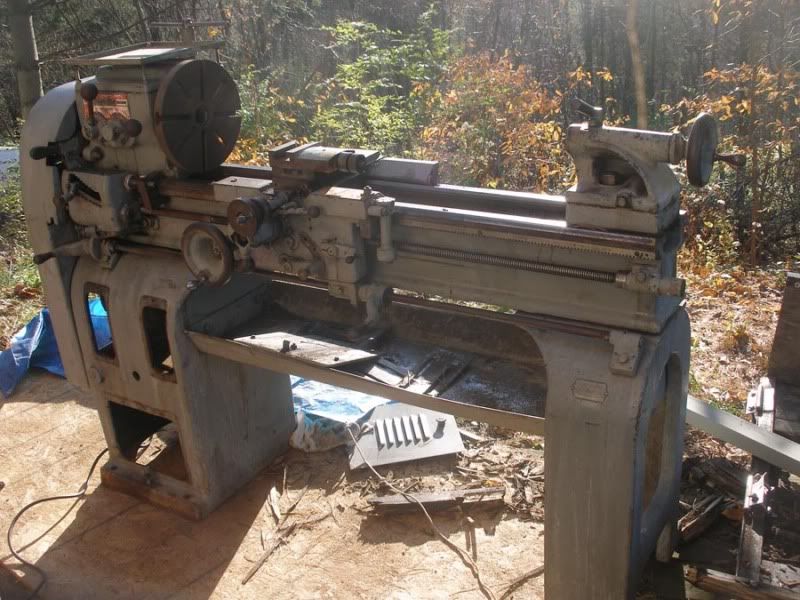madmorrie
Plastic
- Joined
- Mar 16, 2009
- Location
- Melbourne, Australia
Hi there, new to the forum but I think it will help me out a lot, from what I have read so far anyway.
My lathe is labelled 'Sebastian, Cincinatti Ohio'. It is not quite complete and looks to have been messed about a fair bit in it's no doubt long career. No idea of the history of it, I got it off ebay a year or so back, and that guy I bought it off had only had it a few years and supposedly only used it to turn bits of wood?
I have used it to make a few bits and bobs for my car project, but I haven't spun a lathe since high school, so I'm pretty rough. You know the story, always wanted a lathe, then one comes up cheap and you're like "what do I do now?"
I'd like to restore it a bit (once car if finished I think) and make sure it's in good working order. If anyones got any tips on specific things to check it would be great. I plan to turn a test lenght to check alignment, but I don't have a tailstock centre yet. Would I be right in assuming it's a Morse taper No. 2? Can anyone tell from the photos?
Anyway, even though it's probably a hundred years old, It's still got a bit of life left, with any luck it might last another hundred.
Will post pics in a minute.
Madmorrie
My lathe is labelled 'Sebastian, Cincinatti Ohio'. It is not quite complete and looks to have been messed about a fair bit in it's no doubt long career. No idea of the history of it, I got it off ebay a year or so back, and that guy I bought it off had only had it a few years and supposedly only used it to turn bits of wood?
I have used it to make a few bits and bobs for my car project, but I haven't spun a lathe since high school, so I'm pretty rough. You know the story, always wanted a lathe, then one comes up cheap and you're like "what do I do now?"
I'd like to restore it a bit (once car if finished I think) and make sure it's in good working order. If anyones got any tips on specific things to check it would be great. I plan to turn a test lenght to check alignment, but I don't have a tailstock centre yet. Would I be right in assuming it's a Morse taper No. 2? Can anyone tell from the photos?
Anyway, even though it's probably a hundred years old, It's still got a bit of life left, with any luck it might last another hundred.
Will post pics in a minute.
Madmorrie















